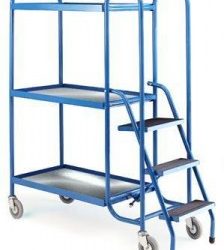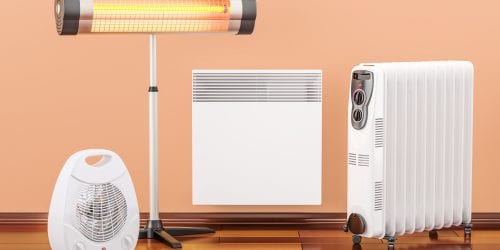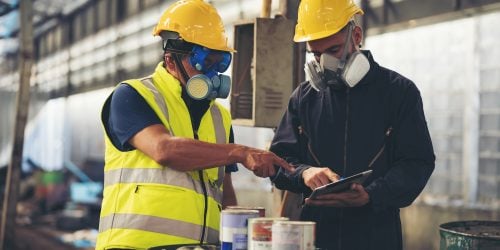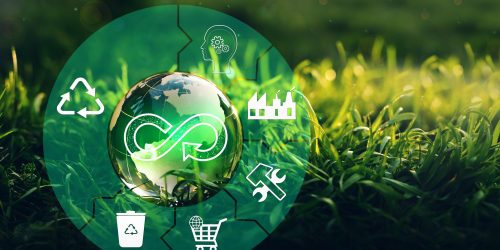Purchasing guide: The new eco-friendly products for offices and warehouses
A CSR strategy along with a sustainable procurement policy involves paying attention to your own professional equipment. Whether they have an environmental label or eco-label or are made from recycled or second-hand materials, eco-friendly products are becoming more and more common. So much so that it is now possible to equip all your business premises with eco-friendly products and reduce your company’s environmental footprint on a daily basis.
How to recognise an eco-friendly product?
Among the countless so-called ‘green‘, ‘natural’, or ‘eco-friendly’ products available on the market, it is not always easy to make the right choice for the environment. A brief overview is necessary.
What is an eco-friendly product?
Eco-friendly products have a reduced environmental impact throughout their life cycle (design, transport, use, and recycling when they become waste). Their design can be certified by an environmental label or eco-label recognised at national, European, or international level. Independent bodies regularly check the ecological and performance criteria of these products.
How to choose eco-friendly products?
For your sustainable procurement, choose committed suppliers who comply with ISO 26,000 and ISO 14,001 standards.
The next lever for action to develop a sustainable procurement strategy in line with your CSR policy is to opt for labelled products. For example, the EU Ecolabel makes it easy to identify products with a limited environmental impact. It can be applied to a wide range of products: from stationery to paint, from eco-friendly office furniture to hygiene products. Check for this label on the packaging or on the product sheet, then place your order with confidence!
Why buy sustainably for your business?
Beyond the principle of environmental protection, choosing sustainable products and procurement means:
- Complying with government measures;
- Improving your brand image;
- Being more attractive to customers, who are increasingly concerned about the ecological impact of companies;
- Providing a healthier working environment for employees;
- Developing an ethical ecosystem with partners;
- Choosing better quality products that last over time and therefore help reduce costs.
Choosing eco-friendly products, a gesture for the planet
Progress with recycling is such that there is now an almost infinite range of eco-friendly, compostable, reusable, refillable, and/or recycled products. Whether made of plastic, paper, glass, cardboard, or metal, they will all meet your needs by combining durability, aesthetics, and ease of use.
Eco-friendly products available for all your workspaces
In the warehouse, once wrapped in recycled kraft paper, bubble wrap or cardboard, packages can be transported on trolleys, pallets and in plastic bins, all of which are also recycled.
Eco-friendly and/or recycled products also have their place in office spaces. In home offices as well as on company premises, folders and dividers, pencil pots, reams of paper, bookends, magazine racks, postal tubes, notebooks, envelopes, scissors, and staplers are all office essentials that can be recycled.
Relaxation areas should not be forgotten, as there are also benches, reception chairs and even very comfortable picnic tables made of recycled plastic.
And, of course, to help with the recycling of your own waste, equip your workspaces with recycling bins for cardboard, plastic, etc. Moreover, as eco-friendly products are designed with a circular economy approach, you can recycle their packaging and the equipment itself at the end of its life. This is a further step towards green business (2,208,007)!
Recyclable, and biodegradable, how can you tell the difference between these eco-friendly products?
How can you tell if the packaging is recyclable? The Möbius loop is the benchmark: it is one of the most well-known in Europe. When accompanied by a number, this indicates the percentage of recycled material used to manufacture the packaging. The arrows indicate that the item can be recycled.
The TÜV certification, on the other hand, provides labels for biodegradable products according to their category. Even metal can be recycled: the logo of the Metal Packaging Europe organisation is one way of identifying this type of packaging. Similarly, the ‘Alu’ symbol surrounded by two arrows is displayed on products containing recyclable aluminium. By choosing eco-friendly packaging, you are following a consistent CSR approach.
If you want to go further in waste reduction, even start a zero-waste plan, opt for second-hand items. Today, as part of a long-term eco-friendly and economic approach, the purchasing of refurbished products is becoming increasingly popular. Opting for a reusable system is a sustainable gesture and it is worth considering it as part of your eco-friendly policy.
Reduced energy consumption thanks to eco-friendly products
Energy is another lever for action that can be addressed as part of a sustainable strategy. It is possible to save it without rationing it. For example, by using LED lighting systems and bulbs. Not only do they break records in terms of energy efficiency, but they also have particularly long lifetimes.
Solar energy is also a valuable ally. Rechargeable LED solar lamps or LED solar lanterns can be used to light up outdoor areas without wasting or unnecessarily increasing your fixed electricity costs.
To charge your computers, smartphones, tablets, and accessories, it is also possible to use solar kits and USB charging points equipped with solar panels. And for all other electronic equipment, recycled and rechargeable batteries are, of course, essential.
Finally, kits for general electricity metering, room temperature reading, or water metering allow you to monitor the consumption of water, electricity, and heating in your work premises at any time.
Eco-friendly cleaning products for the health of everyone
During epidemics, as well as under normal circumstances, it is essential to create optimal sanitary conditions in your premises. This includes the implementation of responsible cleaning, which involves:
- Reducing the consumption of resources (water, energy, etc.);
- Favouring products with an environmental label (or eco-label);
- Avoiding products that are harmful to the environment and health;
- Encouraging the use of reusable cloths;
- Limiting the production of waste by favouring concentrated products.
As part of a sustainable procurement policy, durable products should be favoured over disposable items.
It is possible to clean while limiting the environmental and social impact. There are many ecological cleaning solutions (2,208,005). Descaling detergents for bathrooms, degreasing cleaners for industrial kitchens, multi-purpose cleaners, alkaline floor cleaners… Make sure that the products you use all have an eco-label, a concentrated formula, or a hazard symbol.
Cleaning teams should also be provided with recycled plastic trolleys, with recyclable bin liner holders and reusable protection.
For cleaning, there is a wide range of equipment made of recycled materials. An increasing number of industrial vacuum cleaners, for example, are being designed to be eco-friendly. These innovative models usually contain dust bags made of recycled paper, and a tank made of recycled plastic, or have reduced power consumption.
Eco-friendly wooden office furniture
The use of wood is still very common in all professional equipment. From eco-friendly office furniture to shelving, pallets, wooden benches, and meeting tables make sure that they are all certified.
The issue of deforestation and its consequences on the earth arises when purchasing such products. To continue using this robust and plastic-free material in an environmentally friendly way, opt for products with the FSC (Forest Stewardship Council) or PEFC (Programme for the Endorsement of Forest Certification Schemes) labels. These international certifications guarantee that the wood used in the manufacture of the products comes from a sustainably managed forest while imposing certain specific requirements on the operator, such as:
- Protection of forest biodiversity;
- Monitoring of the activity (forest regeneration, soil and water conservation, etc.);
- Respect for the local population.
Purchasing equipment with wood from a sustainably managed forest does not mean that it is an eco-friendly product. When purchasing, check for national or European labels that guarantee the product is designed in a sustainable way.
National standards such as NF in France or GS in Germany certify the production of environmentally friendly equipment. For example, eco-friendly office furniture can be made of sustainable materials and manufactured using techniques that reduce the amount of raw materials required. This can be recognised by the presence of an environmental label or eco-label.
Finally, it is also worth noting that, in a circular economy, wood waste can be recycled. Furthermore, some factories use the ‘waste’ produced during the manufacture of furniture, such as wood chips, to fuel their boiler rooms.






